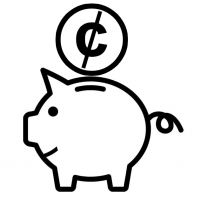Refinancing to get a lower interest rate is one of the rare times that you
can save 5 or even 6 figures! But people always ask me how to know if the time is right. Should they refinance now? Or wait? Or… refinance all over again?
That’s why I created something that I call the “Refinancing Rule of 5’s.” It helps answer this question simply and finally. Here it is: You should refinance IF:
1. Your new interest rate will be at least .5 percent —half a percent— lower
than your current rate.
2. You will add 5 years or less to the length of your loan. Reducing the years would be even better.
3. You will be able to recover your closing costs in 5 years or less — preferably much less. Now let me quickly repeat and explain each part of the rule.
First, Your new interest rate will be at least .5 percent lower than your current rate. People used to say you should only refinance if you could snag an interest rate that was at least 1 percentage point lower. But since rates have been hovering at such low numbers for years now, a half a percent is actually a big deal and a good minimum goal.
Second, You will add 5 years or less to the length of your loan. Reducing
the years would be even better. Often when people refinance, they focus
solely on getting a great new rate and leave everything else the same. If they originally went with a 30-year fixed rate mortgage, they do so again out of habit.
Depending how many years there are left on your loan that can defeat the entire purpose because even if you get a lower interest rate, stretching out those interest payments over additional years will eventually cost more.
Third, You will be able to recover your closing costs in 5 years or less —
preferably much less. Closing costs are the fees you have to pay to get
the new loan, like the appraisal and title fees and so on. Most of all you
should make sure you will be in this house long enough to recoup the closing
costs required to refinance. To figure this out, all you do is divide the cost of closing by your monthly savings to see how long it’s going to take for the new loan to pay for itself. Let’s say your closing costs were $1300 dollars and your monthly savings from refinancing was $132. $1300 divided by $132 is 10 months. That is far less than 5 years, so you’re good to go.

